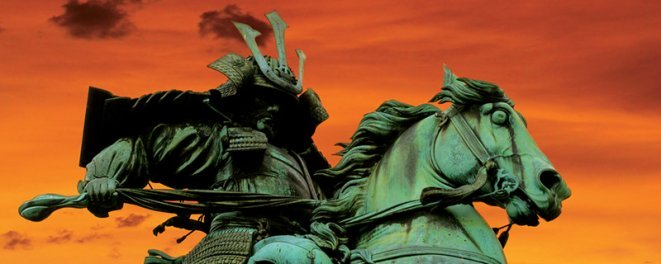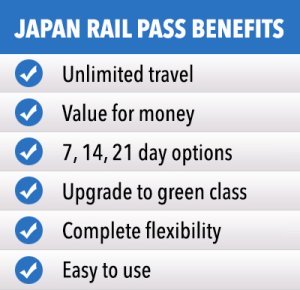Brief History of Japan

The long history of Japan, which is believed to have begun as far back as the prehistoric era, can be divided into four periods — prehistoric and ancient, classical, medieval, and modern.
Prehistoric and Ancient Period (35,000 BC – 538 AD)
The prehistoric and ancient era of Japan covers the time up until 538 AD, including the Paleolithic (from 35,000 BC to 14,000 BC), Jomon (from 14,000 BC to 300 BC), Yayoi (from 300 BC to 250 AD), and Kofun (from 250 to 538) periods.
The earliest human beings to live in the Japanese archipelago existed during the Stone Age, specifically in the Paleolithic period. They are believed to have developed skills that enabled them to make tools from stone.
Eventually, they built the foundation of the Jomon culture, which is one of the world’s oldest societies, known for their hunting and gathering practices. In addition to tool-making, they also started shaping pottery with a rope pattern design using wet clay and creating jewellery from shells, stones, bones, antlers, and other materials.
By the start of 300 BC, rice farming and metallurgy of iron and bronze arose. This period, which lasted until 250 AD, is referred to as Yayoi (meaning “new life”) in reference to an area in Tokyo where artifacts from this era were unearthed.
The years 250 to 538 witnessed the earliest documented history of Japan. This period is known as Kofun, and it saw the introduction of Shintoism and the rise of the Imperial House of Japan.
Classical Period (538 – 1185)
The Classical Period opened with a big leap in the political, social, and artistic aspects of the Japanese society, including the fruition of the Yamato rule and the beginnings of Buddhism in Japan. This formative stage is known as the Asuka period.
When the Nara period started in 710, the number of Japanese villages that practiced agriculture and followed Shintoism started to increase. Meanwhile, the nobles and elite adopted much of the Chinese culture, specifically fashion, writing and Buddhism.
Closing out the Classical Japanese era is the Heian period, which started in 794 and ended in 1185, and saw the peak of Taoism, Buddhism, poetry, literature and art in Japanese society.
Medieval Period (1185 – 1600)
The Medieval era in Japanese history lasted for more than four centuries. It consisted of the:
- Kamakura period, the initial years of which saw the governance of Minamoto no Yoritomo, Kamakura’s first shogun, along with the rise of the samurai warriors, caste system and feudalism;
- Muromachi or Ashikaga period, which covered the time of the Ashikaga or Muromachi rule (headed by their first shogun, Ashikaga Takauji) up until the early years of the Sengoku or Warring States period from 1465 to 1573, when the last shogun, Ashikaga Yoshiaka was cast out of Kyoto by daimyo Oda Nobunaga; and
- Azuchi-Momoyama period, which covered the ruling years of Oda Nobunaga and Toyotomi Hideyoshi (1573 to 1600) and laid the foundations to the formation of the Tokugawa shogunate.
Modern Period (1600 – current)
The establishment of the Tokugawa shogunate signified the commencement of Japan’s modern period, which featured improvements in the overall social, political and economic stability of the country. With Tokugawa Ieyasu holding the reins, Japan became self-sustaining, utilising its resources to the maximum.
In 1868, during the Boshin War, the Tokugawa shogunate fell and was replaced by the Meiji Empire, led by Emperor Meiji. During this time, Japan switched from a society that was isolated and under feudal rule into a modern one that was characterised by significant transformations in its economic, political, military, social and international affairs. It ended when Emperor Meiji died in 1912.
Emperor Taisho took over the throne and was in power for 14 years, a time that was dubbed the “Taisho democracy” because of the ascent of the democratic parties into political power.
Emperor Taisho’s death from a heart attack in 1926 brought in the Showa period, which shifted the Japanese political system into ultra-nationalism, fascism and totalitarianism. Japan was among the many nations badly impacted by the Great Depression in the 1930s. Led by Emperor Showa, the country became a presence on the global scene, taking part in the Second Sino-Japanese War (1937-1945) and the Second World War (1939-1945).
After it was defeated in World War II, Japan was occupied by foreign rule for seven years. It underwent major restructuring in its economy and politics, particularly from being governed by an Emperor to being a democratic, constitutional monarchy.
From 1989 up to the present, Japan is in the Heisei period, with Emperor Akihito on the throne. Through the years, the country has experienced huge leaps in economic progress and has gained much international recognition of its popular culture (manga, anime, video games), tourist landmarks, culture, food and history.












